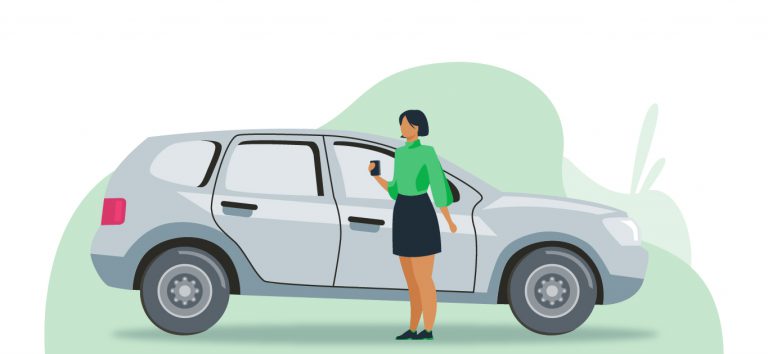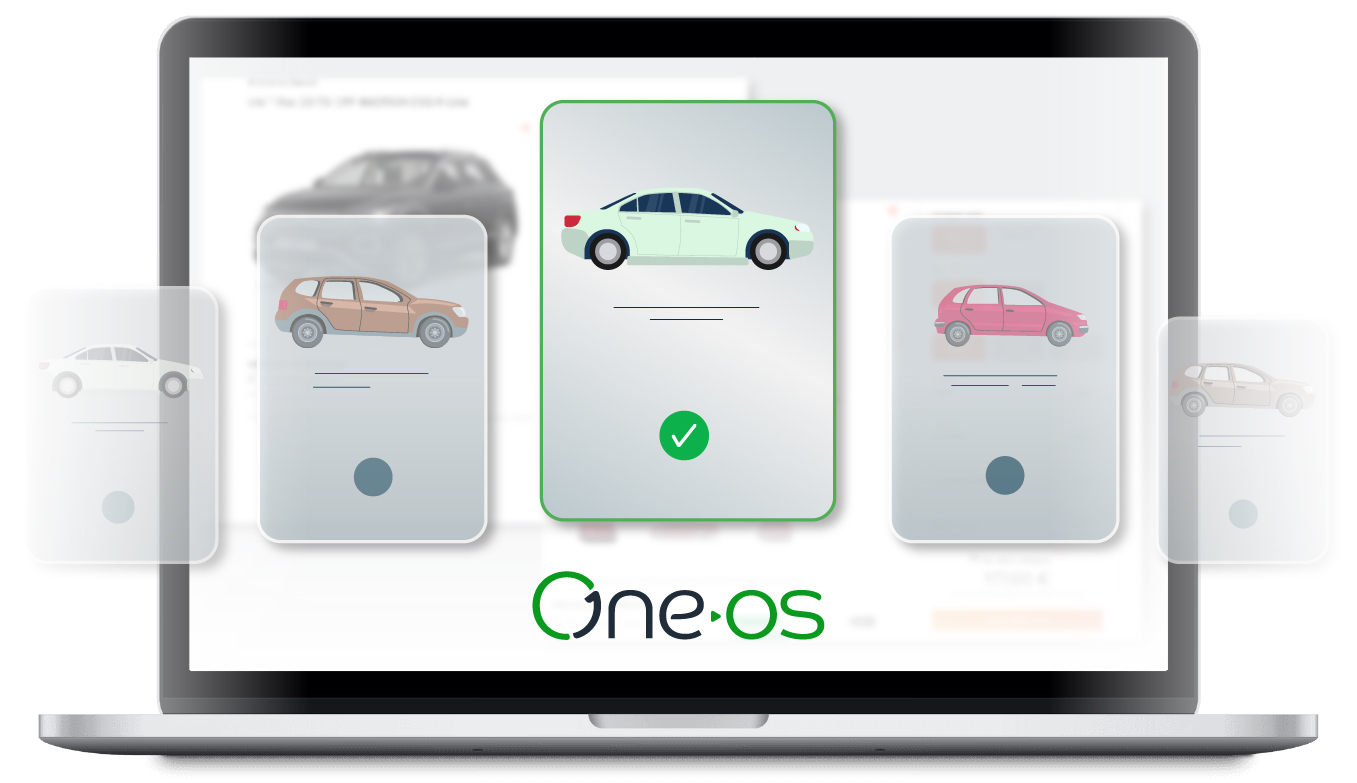
Vom Autobesitz zur Autonutzung – der Klimawandel sorgt für ein Umdenken im Nutzungsverhalten. Wie wird Mobilität in Zukunft aussehen? Eines scheint klar, die Mobilität wird zumindest vielfältiger und umfasst nicht nur PKW und ÖPNV, sondern auch Carsharing, Abo-Modelle, Lastenräder, Elektrofahrzeuge und vieles mehr. Die Digitalisierung des Sektors und neue Geschäftsmodelle können dabei helfen, den Wandel zu gestalten.
Immer mehr Fahrzeuge konkurrieren auf engem Raum – doch der Klimawandel erzeugt zusätzlichen Handlungsdruck.
Recently, car sharing is being marketed very strongly, a shift from car ownership to car use, and the sharing economy is receiving increased attention as a result of the hype, not least with reference to sustainable mobility. But is it really the case that drivers are willing to give up their own vehicles for environmental reasons? The official figures speak a different language. The online portal Statista reports an unbroken record in vehicle registrations. On January 1, 2021, the passenger car population will reach an all-time high of around 48 million vehicles. Compared with the previous year, there are almost two million additional vehicles on the roads in this country, an increase of around 2.5 percent (as of September 3, 2021). [ 1 ] Against the backdrop of the Paris climate protection agreement, this development is problematic. And the consequences include not only the emissions of greenhouse gases and nitrogen oxides emitted while driving.
Noch fehlt es an grünem Stahl für die Autoproduktion.
The core material in production alone, the steel used, accounts for up to 46 percent of CO2 emissions in internal combustion vehicles. In electric vehicles, they shift more to the battery. Research into sustainable alternatives is therefore being carried out feverishly in production. In the future, steel urgently needs to be produced in a climate-friendly and economical way instead of using coal. [ 2 ] So what potential do car sharing & co. offer in the coming years for meeting the 1.5 degree target? There is not much time left until 2030 to drastically reduce global emissions and, according to the UN Environment Programme (Unep), even the current climate protection plans are far from sufficient. [ 3 ]
The question, therefore, arises as to what starting points there are for anchoring climate protection in the mobility sector. Under what circumstances are consumers willing to do without their own vehicles? How can the utilization of existing vehicles be increased? Or put another way: How can sustainability and climate protection be achieved through careful and efficient use of resources? In principle, the concepts have been on the table for many years and are being continuously expanded and optimized; a large number of large and small mobility service providers offer car-sharing services, long-term rental, and, more recently, subscription models. The basic idea is that a private automobile in inner cities is increasingly counterproductive for the mobility of all road users. The resources used are not being used efficiently. According to the Federal Environment Agency, a car is effectively moved for only one hour per day; the rest of the time it stands around and blocks valuable space, especially in cities. [ 4 ] With car sharing, vehicle utilization can be optimized for an entire vehicle pool using intelligent algorithms. In addition, the most modern vehicles used in car-sharing ensure lower CO2 emissions on average. Finally, car sharing reduces the burden on the environment especially when it is used together with other means of transport. Although users massively avoided public transport and even more so trains during the Corona pandemic, the carsharing industry, which had been all but declared dead in the meantime, is experiencing solid growth in the current year. [ 5 ]
Will car sharing reduce the number of private cars in the medium term? The German National Association of Car-Sharing is optimistic; the traffic-reducing effect is scientifically well proven.
A 2020 study concludes that station-based car sharing and combined models with free-floating, in particular, are leading to an elimination of private cars. [ 6 ] The reasons for this are the generally lower prices and the reliable availability of vehicles in station-based models. The Federal Environment Agency recommends a target of 150 cars per 1,000 people for climate and environmentally friendly urban traffic. Car sharing could achieve or even fall below this motorization rate in the urban traffic of the future. Depending on the calculation and local conditions, the replacement rate is between three and ten vehicles. In densely populated inner-city areas of large cities, it can be well over 10 vehicles for station-based services. [ 7 ] A carsharing vehicle could therefore replace a considerable number of private vehicles if the omission of new purchases is counted. There is also a call for car-sharing services to be complemented and made more attractive by accompanying public transport measures. Finally, greening the existing parking areas would have an additional effect on the climate and the quality of life in cities.
Ob der Trend zum eigenen Auto anhält oder das Carsharing sich durchsetzt, hängt auch von der Attraktivität und Sichtbarkeit der verfügbaren Angebote ab.
We at KMS mobility solutions want to contribute to the mobility turnaround with our solutions. With our solutions, we can serve all modes of vehicle use, be it car sharing, classic short-term rental, or car subscription. With good planning and organization, the vehicle utilization of small, medium, and larger vehicle pools is significantly increased, which has a positive impact on achieving climate targets. For example, the KMS Share2Rent app gives end users low-threshold access to rental vehicles and makes the entire process from booking to billing convenient. At the same time, the backend KMS RentOffice enables the service provider to rent out the vehicles in a classic way or on a subscription basis and thus use the fleet efficiently.

Mit der App Share2Rent hat der Endverbraucher einen niederschwelligen Zugang zu Miet- und Leihfahrzeugen. Das kontaktlose Öffnen und Schließen des Fahrzeugs funktioniert problemlos und ist inzwischen eine Selbstverständlichkeit. Die gängigen Zahlungsanbieter sind integriert – Sharing wird somit immer einfacher und komfortabler.
Letzten Endes werden Convenience und Service darüber entscheiden, ob die Verbraucher das Motto Autonutzung statt Autobesitz in der Breite annehmen und sich nach und nach vom eigenen PKW verabschieden. Wenn dies gelingt, können Sharing und Abo dazu beitragen, die ehrgeizigen Klimaziele zu erreichen, ohne auf die Annehmlichkeiten des Automobils ganz verzichten zu müssen. Je nach Anwendungszweck haben die Kunden durch ein integriertes Mobilitätsnetz eine größere Flexibilität und können eine Auswahl aus verschiedenen Fahrzeugtypen und –modellen treffen.
KMS – Keep Mobility Simple!
Sources:




